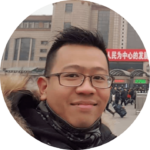The best web design projects include SEO from the start. Any website needs technical elements to succeed in the search. Otherwise, even the most beautiful efforts will fail.
Building a website is based on prioritizing the needs of your users; whether you need to accept pre-orders of your products through WooCommerce pre-order plugin or a page to display your services, you need to be sure from the start that you know what your customers are looking for, and they will find you first.
SEO and web design work together more effectively than most people realize. Their parts blend and flow nicely into each other if done right, your website visitors will not know anything about the content you have created; they should start moving around your site.
So, what elements of SEO and web design work together? Check out these eight ways to share them.
1. Visual Aesthetics
Let’s be honest here. The visual appeal and overall user experience (UX) of your website design are essential, but in a different way than you think.
Of course, you can have a beautiful page and still get zero traffic from Google. The parameters that search engines use to crawl pages to determine rankings are not entirely visual, so it doesn’t matter how wow factor your website design is from this point of view.
But there is one catch to this. Social media links from past clients and positive reviews on social media and other websites contribute to your ranking. So, if your website looks like it’s from 2001, your professional appeal diminishes. On the other hand, only a few people will promote your business page.
Do you see how it works? An easy-to-navigate and user-friendly page will have an impact on SEO.
2. Sitemaps
Speaking of crawling your website, design can help in many ways. The sitemap is essential for search engines to crawl your website correctly.
Your sitemap provides search engines with a guide to all the pages and content on your site. This lets you tell search engines which pages are most important to your site.
This is an essential feature to set up well for prominent websites and new ones that may not have external links.
In addition to being useful for search engines, maps are also helpful for humans. A new visitor can look at your map to get their bearings.
Sitemaps also contain essential metadata about your site to improve their chances of ranking higher.
3. Use of Slugs
This is an improvement in the design of the site and an improvement in Google and SEO. The keywords in your URL sequence (slug) help Google understand what you’re talking about. For example, let’s say someone type “how to rank on the first page of Google?”.
If the slug correctly interprets these search terms, Google will quickly recommend your site to the searcher. Your website URL should not contain a long string of letters, letters, or numbers because these slugs can be confusing.
A powerful URL slug checks the information on your site and helps Google crawlers figure out how to get there. Keep in mind that Google will take into account your page’s URL to determine its rank.
4. Loading Speed
The speed at which your website loads on computers and mobile devices is essential to SEO. The loading rate is one of the most popular methods used by Google to determine the ranking, while websites improve the user experience.
If your site loads slowly, you will lose Google ranking and get a higher order. A slower load speed will also slow down Google’s crawling of your site, resulting in a lower page index.
About half of the users who visit your website may leave if your site can’t load within three seconds. Therefore, the ideal loading time is at most two seconds. You can load your website faster, removing plugins and optimizing your images.
5. Image Alt tags
This is important for several reasons that your images must have alt tags.
First, images return about 25% of Google searches. The data shows that most young searchers (62%) want visual search rather than any other sufficient technology.
Alt tags let the Google algorithm know precisely what’s happening with your images. If it matches the user’s search, your vision may appear in their search results.
Your alt tag should be a complete sentence describing precisely what is in your image, with a capital letter at the beginning and a dot at the end.
Second, it improves public access. Someone using a screen reader to access your website can understand the content of your images, helping the visually impaired. It’s still a great user experience.
6. Redirects
When your website has been around for a while, some of its content may need to be updated. You can change the name of one of your products and redirect the old product page to the new one.
You may have a blog that’s been around for ten years, and you have some old posts that you want to repurpose into new, more relevant content. By using a 301 redirect, you can direct traffic from the old URL to the new link.
It’s also essential to identify 404 error pages to help you remove dead links to content that no longer exists.
Checking these error codes allows you to keep your website in the highest position, which is encouraged by search engines.
7. Metadata
Your metadata (or meta tags) includes titles and meta descriptions. This information appears in Google search results. Considering that 36% of SEOs think the title to be the most crucial element of SEO, ensure your metadata is optimized.
The title and meta description should include your page’s or post’s primary purpose, which will improve your SEO. Your title can be up to 60 characters, and your meta description up to 160 characters.
8. User’s Trust
While you can measure the degree of online trust in your website, it is a significant factor in ranking it. Most people form an opinion quickly.
If they visit your site once and find what they need but need help finding or understanding your site, they will see your site again sometime soon. Keep in mind these three ways to improve your communication with users.
Create a clutter-free, easy-to-use website that describes what people always want to see. Keep your website up and running today.
Make your website more reliable, direct users to the products/services they need, and offer promotions to give users an unforgettable experience.
Conclusion
As SEO continues to shift towards user expectations and query satisfaction, the importance of web optimization has never been greater. When you choose a website, choose one that understands the SEO needs of modern websites.
The key to a well-designed, SEO-optimized website is to bridge the gap between web development and SEO. Encourage your teams to work together to ensure your website is optimized for SEO and usability.
Remember to value the customer’s time and effort to rank well on the search engines. So, optimize the above elements, write the best content, and try the best apps to improve your search results.




